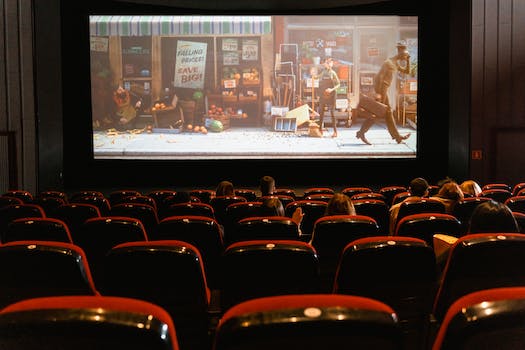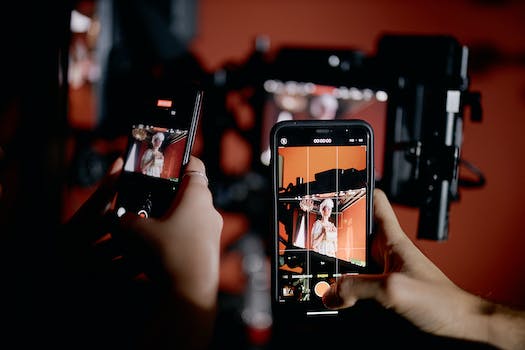Movies and documentaries are two popular forms of visual storytelling that captivate audiences worldwide. While both mediums share the goal of entertaining and informing viewers, they differ significantly in their approach and purpose. This article aims to conduct a comparative analysis of movies and documentaries, exploring their distinct characteristics, storytelling techniques, and the impact they have on the audience. By examining these differences, we can gain a deeper understanding of the unique qualities that make each medium a powerful tool for storytelling.
- 1. Introduction
- 2. Differences in storytelling
- 2.1. Narrative structure
- 2.2. Use of actors
- 2.3. Realism vs dramatization
- 2.4. Scripted vs unscripted
- 2.5. Emotional impact
- 3. Differences in production
- 3.1. Budget and resources
- 3.2. Filming techniques
- 3.3. Editing and post-production
- 3.4. Visual effects
- 3.5. Use of interviews
1. Introduction
Movies and documentaries are two popular forms of visual storytelling that have captivated audiences for decades. While both mediums share the goal of entertaining and informing viewers, they differ significantly in their approach and purpose. In this comparative analysis, we will explore the key differences between movies and documentaries, examining their narrative techniques, storytelling methods, and intended impact on the audience. By delving into these aspects, we can gain a deeper understanding of how movies and documentaries contribute to the world of visual media.
1.1. Definition of movie
A movie is a form of visual storytelling that combines various elements such as acting, directing, cinematography, and editing to create a narrative. It typically refers to a fictional or scripted work that is intended for entertainment purposes. Movies are often produced by film studios and distributed in theaters, on television, or through digital platforms.
Movies can encompass various genres such as drama, comedy, action, thriller, romance, and science fiction, among others. They have the ability to transport audiences to different worlds, evoke emotions, and provoke thoughts. Through the use of visual and auditory elements, movies aim to engage and captivate viewers.
In contrast, a documentary is a non-fictional film or video production that provides a factual account or explores a specific subject or issue. Unlike movies, documentaries aim to inform, educate, raise awareness, or present a particular perspective on real-life events, people, or topics. They often incorporate interviews, archival footage, voiceovers, and narration to present evidence or present a viewpoint.
While both movies and documentaries utilize the medium of filmmaking, they serve different purposes and employ distinct storytelling techniques. This comparative analysis will explore the key differences and similarities between the two forms of visual media.
1.2. Definition of documentary
A documentary is a genre of film or video production that aims to present factual information and real-life events. Unlike fictional movies, documentaries focus on capturing reality and portraying it in an objective manner. They often explore various subjects such as history, social issues, nature, science, or personal stories. Documentaries can be created for educational purposes, to raise awareness about a particular topic, or to provide an in-depth analysis of a specific subject. Through the use of interviews, archival footage, voice-overs, and observational footage, documentaries offer a unique perspective and insight into the world around us.
1.3. Purpose of the article
The purpose of this article is to provide a comparative analysis between movies and documentaries. By examining the key differences and similarities, readers will gain a deeper understanding of these two forms of visual storytelling. This analysis aims to explore the unique elements and techniques used in movies and documentaries, their impact on audiences, and the overall effectiveness of each medium in conveying messages and narratives. Through this exploration, readers will be able to appreciate the distinct qualities of movies and documentaries, and make informed choices when deciding which type of visual content to engage with.
2. Differences in storytelling
In the world of film and video production, storytelling is a crucial aspect that can greatly influence the success of a project. Whether it’s a movie or a documentary, the way stories are told can differ significantly. Understanding these differences is essential for both filmmakers and audiences.
Movies, as a form of entertainment, often prioritize engaging narratives and character development. The storylines in movies are carefully constructed to captivate the viewers’ attention and evoke emotions. They often follow a traditional three-act structure, with a clear beginning, middle, and end. The focus is on creating a compelling story arc that keeps the audience hooked until the climax and resolution.
On the other hand, documentaries aim to present real-life events, issues, or subjects in a factual and informative manner. While documentaries may have a narrative structure, their primary objective is to educate and raise awareness. Documentaries often rely on interviews, archival footage, and expert opinions to provide a comprehensive view of the subject matter. The emphasis is on presenting facts and evidence to support the documentary’s central theme.
In terms of storytelling techniques, movies have more creative freedom to use fictional elements, such as dialogue, plot twists, and visual effects. Filmmakers can manipulate the narrative to create suspense, surprise, or even fantasy. Documentaries, on the other hand, strive for authenticity and accuracy. They aim to present the truth and shed light on real-life situations.
In conclusion, while both movies and documentaries are forms of visual storytelling, they differ in their objectives and approaches. Movies focus on entertaining and captivating audiences through fictional narratives, whereas documentaries aim to inform and educate by presenting real-life events. Understanding these differences allows filmmakers to choose the appropriate storytelling techniques based on their intended message.
2.1. Narrative structure
Narrative structure plays a crucial role in both movies and documentaries, yet there are distinct differences in the way storytelling is approached in these two forms of visual media. While both aim to engage and inform the audience, their approaches to narrative structure vary significantly.
In movies, the narrative structure tends to follow a more traditional three-act structure, consisting of an introduction, rising action, climax, falling action, and resolution. This structure allows for a clear progression of the story, with a beginning, middle, and end. The plot is often driven by fictional characters and their development, and the focus is on creating a compelling and entertaining story.
On the other hand, documentaries often adopt a more non-linear narrative structure. They may present information in a more fragmented or unconventional way, using techniques such as interviews, archival footage, and voiceover narration. Documentaries aim to provide a factual account of real events or explore real-life issues, often incorporating multiple perspectives and viewpoints.
While movies tend to prioritize entertainment value and emotional engagement, documentaries focus on presenting facts, raising awareness, and stimulating critical thinking. The narrative structure in documentaries is often driven by the subject matter and the need to present a balanced and informative portrayal of real-life events or issues.
In conclusion, the narrative structure in movies and documentaries differs significantly. Movies follow a more traditional three-act structure, emphasizing fictional storytelling and entertainment value, while documentaries adopt a non-linear structure, aiming to present factual information and raise awareness. Understanding these differences is crucial for both filmmakers and audiences to appreciate the unique storytelling approaches of each medium.
2.2. Use of actors
Actors play a crucial role in the storytelling process of movies and documentaries. While both mediums aim to tell a story, they differ in terms of how actors are used.
In movies, actors portray characters and bring them to life through their performances. They use their acting skills to convey emotions, deliver dialogues, and create a connection with the audience. The use of actors allows for a more dramatic and visually appealing experience, as they can fully embody the characters and make them relatable.
On the other hand, documentaries often rely on real people, experts, or non-professional actors to present real-life stories or provide information. The focus is on capturing reality and presenting it authentically. Documentaries may use interviews, archival footage, or reenactments to tell a compelling story without fictional elements.
The use of actors in movies allows for more creative freedom and the ability to manipulate the story to fit a specific narrative. In contrast, documentaries aim to depict reality as accurately as possible, often presenting facts, interviews, and real-life situations.
In conclusion, the use of actors in movies and the absence of actors in documentaries create significant differences in storytelling approaches. While movies rely on fictional characters and dramatic performances, documentaries focus on presenting real-life events and authentic experiences.
2.3. Realism vs dramatization
Realism vs dramatization
When it comes to storytelling, one of the key differences between movies and documentaries lies in the approach of realism versus dramatization. While both mediums aim to entertain and inform the audience, they adopt distinct methods to achieve their goals.
In movies, dramatic storytelling takes center stage. Filmmakers often use fictional narratives, elaborate sets, and professional actors to create a captivating experience for the viewers. The focus is on creating a compelling plot with well-developed characters, where emotions and conflicts are heightened for maximum impact. The purpose is to transport the audience into a different world, allowing them to escape reality and immerse themselves in the story.
On the other hand, documentaries emphasize realism and authenticity. Documentarians strive to present factual information and portray real-life events or subjects. They employ techniques such as interviews, archival footage, and expert opinions to provide an objective perspective. The aim is to educate and raise awareness about a specific topic, shedding light on important issues or uncovering hidden truths.
While movies often rely on imaginative storytelling and creative liberties, documentaries adhere to a more observational and informative style. This fundamental contrast in storytelling approaches sets movies and documentaries apart, offering viewers distinct experiences and engaging them in different ways.
In conclusion, the choice between realism and dramatization greatly influences the storytelling techniques employed in movies and documentaries. Whether it is the allure of a fictional world or the desire to uncover reality, both mediums have their own unique appeal and contribute to the rich landscape of visual storytelling.
2.4. Scripted vs unscripted
When it comes to storytelling, there are distinct differences between scripted narratives and unscripted documentaries. Scripted content refers to movies that are carefully crafted with a predetermined plot, characters, and dialogue. These narratives are often fictional and aim to entertain and engage the audience through a well-structured story. On the other hand, unscripted documentaries capture real-life events, people, and places without any predetermined script. The storytelling in documentaries is based on real experiences, interviews, and observations, providing a more realistic and authentic portrayal of the subject matter. While both mediums have their merits, the approach to storytelling in movies and documentaries differs significantly in terms of structure, purpose, and creative freedom.
2.5. Emotional impact
One of the key differences between movies and documentaries is the emotional impact they aim to create. While both mediums have the power to evoke emotions in their audiences, they do so in distinct ways.
Movies often use various cinematic techniques, such as music, visual effects, and powerful performances, to elicit strong emotional responses. They can transport viewers into different worlds, engage them in thrilling adventures, or stir their deepest emotions through compelling storytelling. Movies have the ability to manipulate the mood and tone of a scene through the use of lighting, sound design, and editing techniques, enhancing the emotional impact.
On the other hand, documentaries usually aim to provoke an emotional response by presenting real-life stories and events. They often rely on interviews, testimonials, and archival footage to provide a factual account of a subject matter. The emotional impact in documentaries comes from the authenticity and relatability of the real people and events portrayed. Documentaries can shed light on important social issues, evoke empathy for the subjects, or inspire viewers to take action.
In summary, movies and documentaries differ in the way they generate emotional impact. While movies use cinematic techniques to create immersive and emotionally charged experiences, documentaries aim to provoke emotions through presenting real-life stories and events.
3. Differences in production
When it comes to production, there are significant differences between movies and documentaries. While both are forms of visual storytelling, their approaches and objectives vary.
Movies, also known as fictional films, are scripted narratives created for entertainment purposes. They often feature professional actors, elaborate sets, and intricate storylines. The production process of a movie involves various stages, including pre-production, production, and post-production. A team of filmmakers, including directors, producers, cinematographers, and editors, work together to bring the script to life.
On the other hand, documentaries aim to inform, educate, or raise awareness about real-life subjects or events. They are non-fictional in nature and present facts, opinions, or interviews to depict reality. Documentaries can cover a wide range of topics, such as history, nature, social issues, or biographies. The production process of a documentary involves extensive research, interviews, location scouting, and capturing real-life footage.
While movies rely heavily on creative storytelling techniques and fictional elements, documentaries focus on capturing and presenting reality. The production requirements for movies often include larger budgets, elaborate sets, and specialized equipment. Documentaries, on the other hand, may have more flexibility in terms of budget and can utilize minimal equipment to capture authentic moments.
In conclusion, the production approaches for movies and documentaries differ based on their objectives and storytelling styles. While movies emphasize entertainment and storytelling, documentaries prioritize presenting reality and raising awareness.
3.1. Budget and resources
When it comes to the budget and resources, there are significant differences in production between movies and documentaries. Movies usually have larger budgets as they require elaborate sets, special effects, and a professional cast and crew. The production process for a movie involves hiring actors, building sets, creating costumes, and investing in advanced technology for visual effects.
On the other hand, documentaries are often made on a smaller scale with limited resources. They focus on real-life events, people, or issues and aim to capture the essence of reality. Documentary filmmakers may work with a smaller crew, use handheld cameras, and rely on natural lighting. The budget for documentaries is usually allocated towards research, travel expenses, equipment, and post-production editing.
In summary, while movies have higher budgets and access to numerous resources for creating a fictional world, documentaries tend to work with limited funds and prioritize capturing real-life moments and stories.
3.2. Filming techniques
Filming techniques play a crucial role in distinguishing between movies and documentaries. While both forms of visual storytelling share similarities in the production process, there are notable differences that set them apart.
In movies, the emphasis is often on creating a fictional narrative that entertains and captivates the audience. Filmmakers employ various techniques to bring their vision to life, including intricate set designs, carefully choreographed action sequences, and visual effects. The primary goal is to transport the viewers into a different world or time, allowing them to suspend disbelief and engage with the story.
On the other hand, documentaries aim to present real-life events, people, or issues in an informative and authentic manner. The focus is on capturing reality as it unfolds, without the need for elaborate sets or scripted scenes. Documentary filmmakers often use handheld cameras to achieve a sense of immediacy and intimacy, allowing the audience to experience the subject matter firsthand.
Additionally, documentaries often rely on interviews, archival footage, and observational techniques to gather information and provide a comprehensive understanding of the chosen topic. This approach requires a different set of skills and equipment compared to traditional movie production.
In summary, while both movies and documentaries utilize filming techniques, the purpose and execution differ significantly. Movies prioritize entertainment and storytelling through fictional narratives, while documentaries emphasize presenting reality and providing insights into real-life subjects.
3.3. Editing and post-production
Editing and post-production play a crucial role in both movies and documentaries, but there are some notable differences between the two. In the context of filmmaking, editing refers to the process of selecting, arranging, and manipulating various shots to create a coherent and impactful visual narrative. It involves trimming unnecessary footage, adding special effects, adjusting the color grading, and ensuring seamless transitions between scenes.
In movies, the editing process is often more complex and elaborate compared to documentaries. Filmmakers have the freedom to experiment with different editing techniques, such as jump cuts, cross-cutting, and montage, to enhance the storytelling and evoke specific emotions from the audience. They can also utilize visual effects, CGI, and sound design to create a cinematic experience that captivates viewers.
On the other hand, documentary editing focuses on presenting factual information and real events in a coherent and engaging manner. While some documentaries may incorporate stylistic elements, the primary objective is to convey truth and provide a deeper understanding of the subject matter. Documentary editors often work with extensive amounts of raw footage, conducting thorough research, conducting interviews, and carefully structuring the narrative to maintain authenticity.
In terms of post-production, movies typically involve more extensive and intricate processes. This includes sound mixing, creating or selecting a musical score, adding visual effects, and fine-tuning the overall audiovisual experience. In contrast, documentaries may have a simpler post-production phase, focusing more on refining the audio quality, selecting appropriate background music, and enhancing the overall clarity of the content.
In conclusion, while both movies and documentaries undergo editing and post-production, the approaches and objectives can differ significantly. Movies often prioritize cinematic storytelling techniques and visual aesthetics, whereas documentaries strive to present facts and real-life events in an authentic and informative manner.
3.4. Visual effects
Visual effects play a crucial role in enhancing the overall cinematic experience for both movies and documentaries. However, there are notable differences in the production of visual effects between these two forms of storytelling.
In movies, visual effects are often used to create larger-than-life experiences and transport the audience into fantastical worlds. Whether it’s showcasing mind-bending action sequences, breathtaking landscapes, or mythical creatures, movies rely heavily on visual effects to bring their imaginative visions to life. These effects are meticulously designed and crafted by skilled artists and technicians, using advanced software and technologies.
On the other hand, documentaries tend to focus more on capturing real-life events and portraying them authentically. While visual effects can still be employed in documentaries, they are usually used sparingly and in a subtle manner. The goal is to enhance the storytelling without overshadowing the documentary’s primary purpose of presenting factual information. Visual effects in documentaries are commonly used for recreations, adding informative graphics, or enhancing the overall visual appeal without compromising the integrity of the subject matter.
Overall, the production of visual effects in movies and documentaries differs in terms of scale, purpose, and execution. Movies aim to create visually spectacular and immersive experiences, whereas documentaries strive to present real-life stories in a visually engaging yet authentic manner.
3.5. Use of interviews
The use of interviews is a significant factor that sets movies and documentaries apart in terms of production. While both mediums aim to tell a story or convey information, the way interviews are utilized differs greatly.
In movies, interviews are often scripted and rehearsed. The actors portray characters who are interviewed as part of the narrative. These interviews are carefully crafted to advance the plot, reveal character motivations, or provide crucial information. The dialogue and responses are meticulously written to enhance the storytelling and engage the audience.
On the other hand, documentaries rely on real-life interviews with people who have first-hand knowledge or experiences related to the subject matter. These interviews are unscripted and capture genuine responses and perspectives. Documentaries often use interviews as a primary source of information, presenting various viewpoints to provide a comprehensive understanding of the topic.
The differences in the use of interviews between movies and documentaries highlight the contrasting goals of the two mediums. Movies prioritize storytelling and fictional narratives, where interviews serve as a tool to enhance the overall plot. In contrast, documentaries focus on presenting real-life events or issues, and interviews act as a means to inform and educate the audience through genuine accounts.
In summary, while both movies and documentaries utilize interviews, their purposes and execution differ significantly. Movies use scripted interviews to advance the narrative, while documentaries rely on unscripted interviews to present real-life perspectives. Understanding these differences is crucial in analyzing the contrasting production approaches of movies and documentaries.
Conclusion
In conclusion, while movies and documentaries both serve as forms of visual storytelling, they differ significantly in their purpose, style, and approach. Movies are often fictional narratives created for entertainment purposes, while documentaries aim to present factual information and raise awareness about real-world issues. Each medium has its own unique strengths and offers distinct experiences for the audience. Ultimately, the choice between movies and documentaries depends on personal preferences and the desired impact on viewers.





